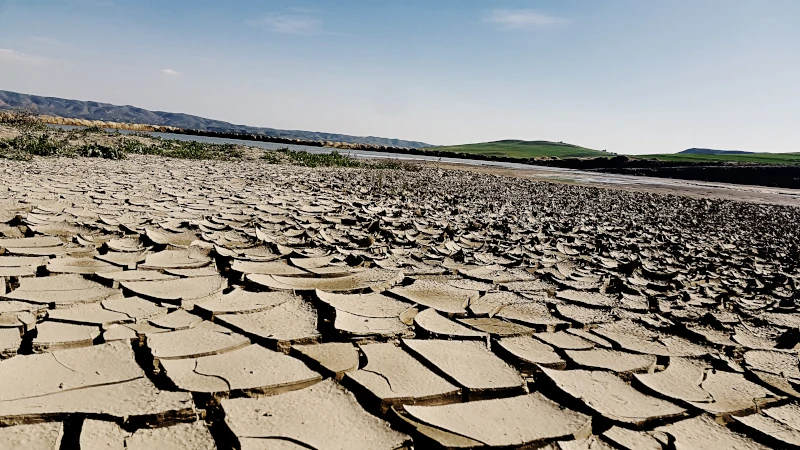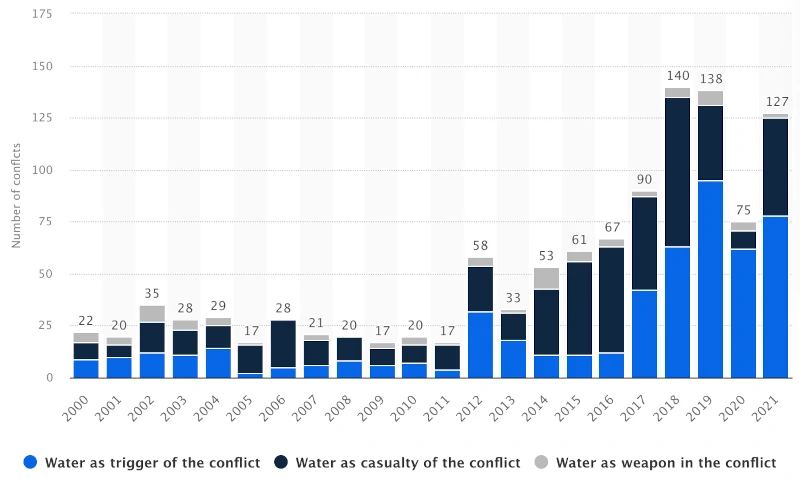Status of Drought and Agrivoltaics.
Drought and desertification represent the most serious environmental problems today and are linked to food and energy production. The current status of drought thus brutally affects our future, and Agrivoltaics seems to be the best solution.

Although these phenomena have natural origins, human activities such as deforestation, overgrazing, urbanization and overuse of groundwater amplify their severity. Agrivoltaics is ingenious because it reconciles precisely this inordinate need for energy with what is agriculture, that is, our most important livelihood.
Indeed, modern human lifestyles contribute significantly to these disasters, altering temperature and precipitation patterns and exacerbating their frequency and intensity on a global scale. And we are noticing it. Just look at what is happening these weeks around the world.
You can also read an introduction to Agrivoltaics Against Drought.
Effects of Drought and Desertification
Drought indicates prolonged periods of waterless conditions. These periods can last up to months and result in desertification, a severe form of land degradation. Once this point is reached, drought turns once fertile ecosystems into deserts, causing all forms of vegetation to disappear. And this is a situation that then proves very difficult to resolve quickly. The production of shade given by an Agrivoltaics plant also seems to be the only concrete and immediate solution here.
Most affected Regions
Developing countries, clearly and especially in Africa, are most exposed to drought and subsequent desertification. Somalia, Namibia and Zimbabwe are among the countries most vulnerable to this problem. But even developed regions, such as Europe and North America, are not immune and in fact experience severe and prolonged droughts. For example, the western United States has been in a dangerous situation for more than two decades, marking the driest period in at least 1,200 years. Think of Las Vegas or some regions of Spain.
Impacts on People and the Environment
The repercussions of drought and especially the resulting desertification are very violent. They include loss of soil productivity, crop instability, and consequently poverty, famine, disease, social conflict, and mass migration.
The economic damage caused by drought disasters in 2022 was estimated at $54 billion, affecting more than 100 million people worldwide. As global temperatures continue to rise, the frequency and severity of agricultural and ecological droughts are expected to increase in the coming years. According to Statista, drought-related conflicts in the past five years have soared. In fact, water acted as a trigger in 78 of the 127 conflicts identified in 2021.

Drought Status & Agrivoltaics: Future Scenarios
Projections indicate a worrying trend: with global warming of two degrees Celsius, there could be at least two drought events every decade, which could double with a four-degree increase. Recent data point to an increase in the frequency of drought disasters, with 22 events recorded in 2022, up from 16 the previous year.
And since water is the most precious resource of all, there is only to be expected a worsening of all social and economic aspects. A book published by Gs-publisher (H2o, Water. Can we still afford it?) highlights the relationship between the meanest human characteristics and possible future scenarios regarding water availability.
Drought Status & Agrivoltaics: The Road Ahead
As the risk of drought and desertification intensifies, the need for proactive measures becomes imperative. Strategies involving sustainable land management, water conservation and international cooperation are key to mitigating the impact of these crises. Here we recall again the new technique of Agrivoltaics, which although still unexplored, offers numerous benefits right away.
Addressing the root causes is critical to preventing the escalation of these disasters and safeguarding our planet for future generations.
Understanding the severity of these environmental problems and taking collective action globally is critical to moving toward a more sustainable and resilient future.
The threats posed by water shortages are as real as they are frightening.


One thought on “Status of Drought and Agrivoltaics.”
Comments are closed.